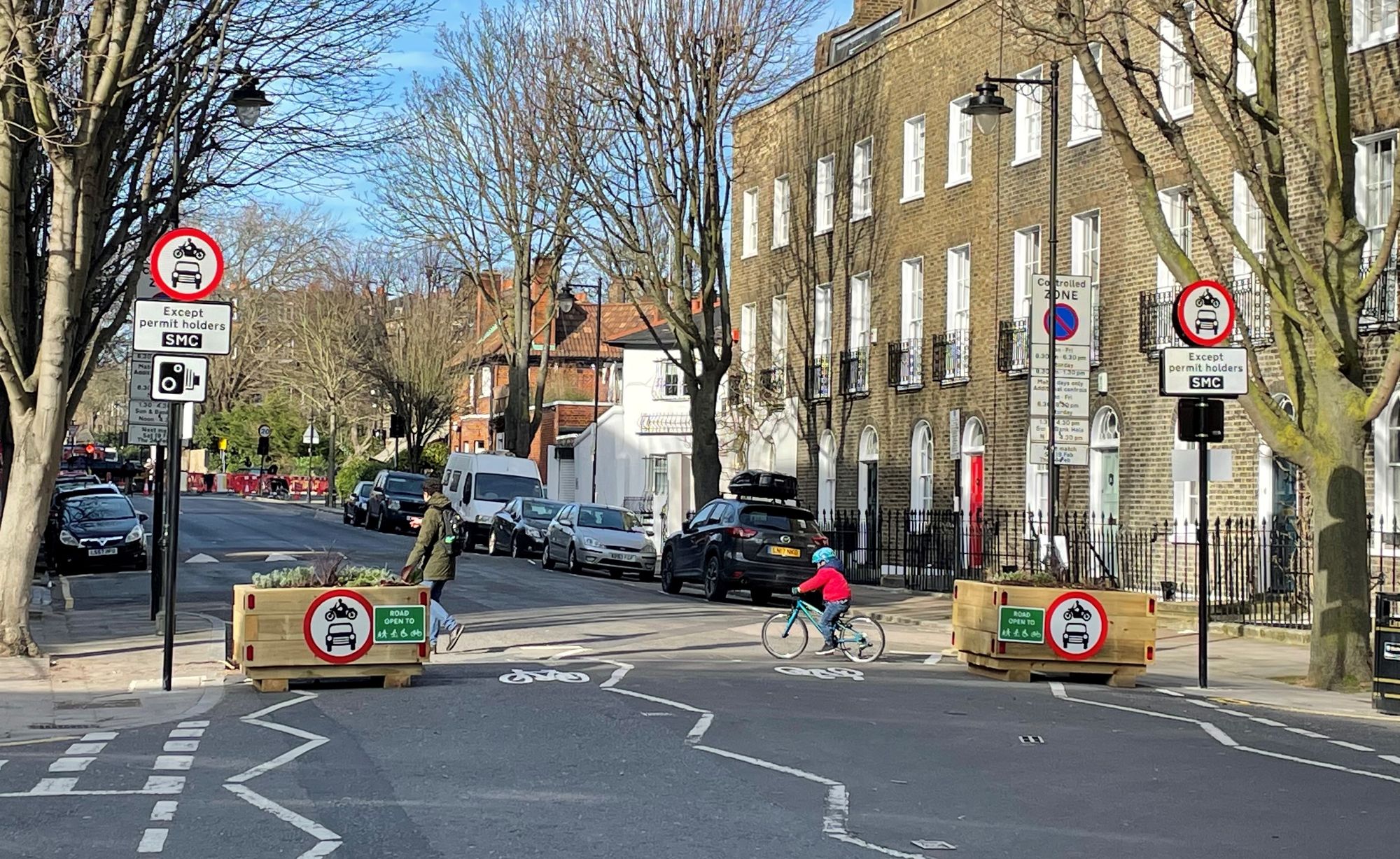These guidelines apply to all LTNs, whether we're looking at Barnsbury & St Mary's, Islington or further afield.
- The location of an LTN is normally determined by the position of main roads which thence form a boundary. Sometimes railway lines, parks, canals, etc. which have no roads across can also become part of the boundary. Living Streets says that ideally a LTN would be 1 km2 and that you should be able to walk across it in 15 mins.
- Filters are positioned to prevent through traffic travelling across the LTN.
- These filters can also create sections within the LTN such that traffic cannot pass from one section to another.
- Sections should not be so large that drivers are tempted to drive short journeys within the section.
- Filters are generally best placed centrally within the LTN.
- Where possible filters should be placed to allow the traffic to loop rather than reach a dead-end which would cause vehicles to reverse.
- Filters generally should not be placed close to where a side road meets a boundary road. The filter should be set back from the main road by a few car lengths. This is because main roads often have parking restrictions and vehicles making deliveries to the businesses on the main road need somewhere to stop.
- Bus routes are normally retained by installing filters controlled by cameras which allow busses to pass through.
- Similarly, camera-controlled filters (sometimes known as ANPR filters – automatic number plate recognition) are used when it is necessary to allow access for emergency vehicles.
- Islington now runs a scheme whereby blue badge holders can pass through some of the ANPR filters in their home LTN.
- Barriers across the street are preferable to ANPR filters: they are cheaper, and easier for drivers to understand.
- In special circumstances other traffic control mechanisms may be useful: one-way streets, banned turns, etc.
- Routes around the LTN need to be examined to ensure that they are not made difficult by, for example, a banned turning at a main road junction.
- It is generally good if a filter can be placed outside a school since it will reduce the traffic passing the school.
- The delivery needs of all shops and businesses must be considered.
- Filters near cafes/restaurants can provide the opportunity for outdoor seating.
- The placement of every filter should consider whether it would allow the creation of valuable safe space for community use such as play areas, plantings, seating, etc.
- The number of filters should be kept to a minimum, consistent with good design. This reduces the costs and also keeps the design simple.
- Where possible existing filters should be retained and existing poles used to hold signage and cameras. This reduces costs and the extent of the changes.
- Often a good entry point into the LTN is at traffic lights.
- The aesthetics of the LTN infrastructure must be considered, especially in a Conservation Area.
- The precise location of infrastructure can be important. Planters and poles, etc. should not hinder access to houses or driveways.
With these guidelines in mind we can now turn to Barnsbury & St Mary's itself: Specific points about our LTN area.

